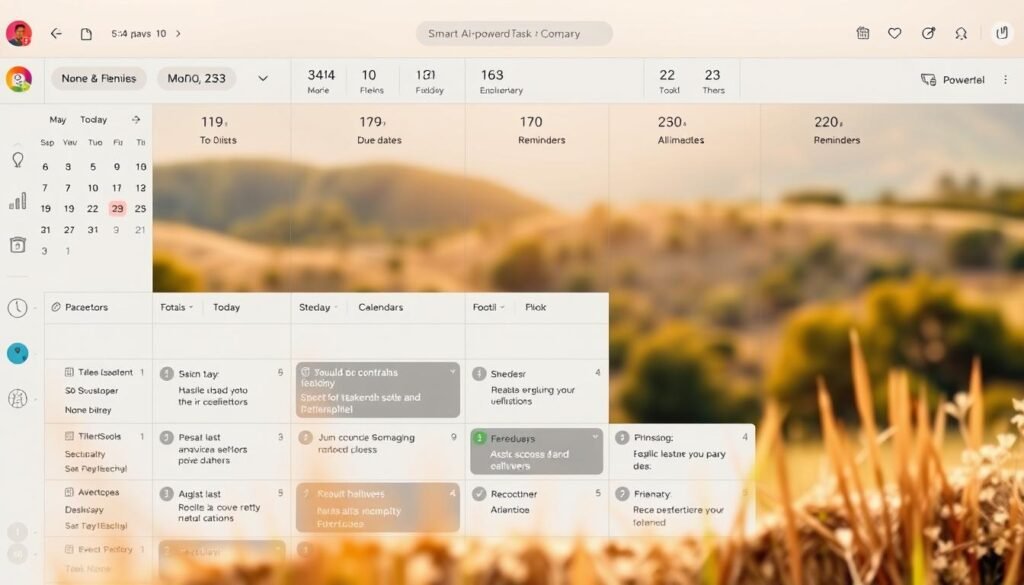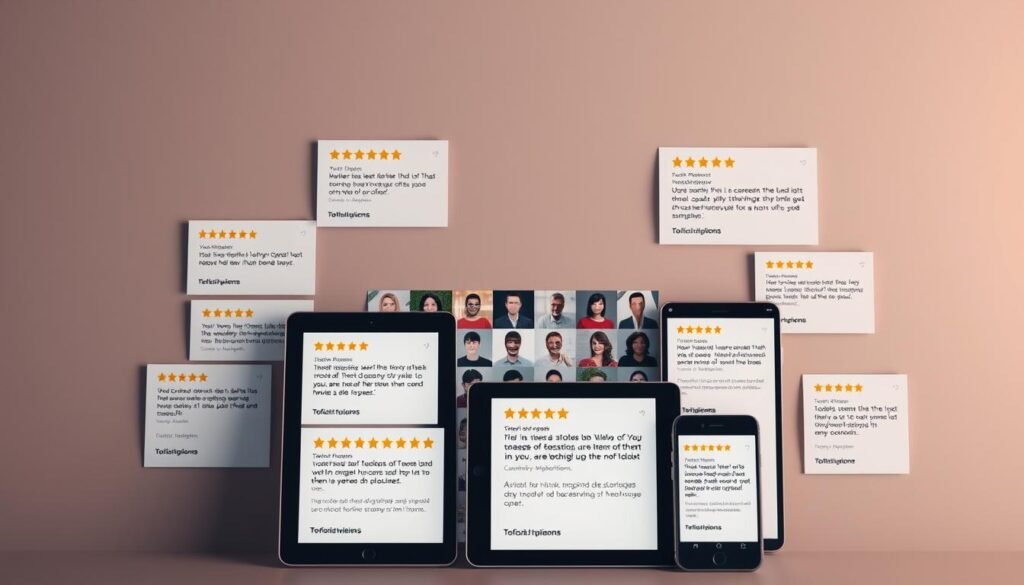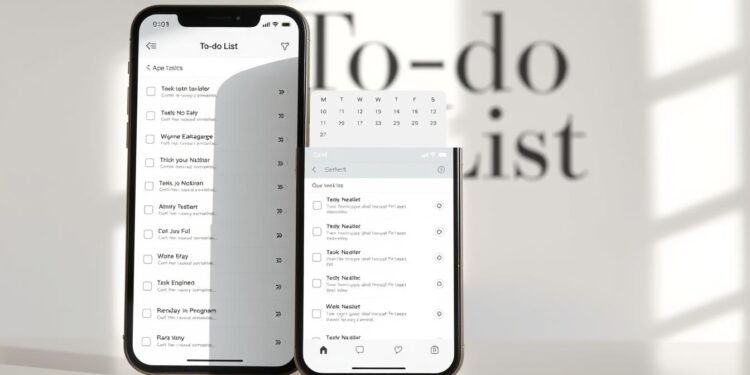Ever feel like your to-do list is running your life instead of the other way around? A super powerful task manager can change that. With 374K+ five-star reviews and 47 million users worldwide, Todoist helps people organize tasks effortlessly.
This to-do list app keeps your mind clear and boosts productivity. TechRadar calls it “nothing short of stellar,” while Wirecutter praises its ease of use. Sync tasks across devices, use natural language input, and collaborate seamlessly with teams.
Whether you’re juggling personal goals or work projects, a well-structured list makes all the difference. Ready to take control of your day?
Key Takeaways
- Trusted by millions with 374K+ five-star reviews
- Simplifies task management for individuals and teams
- Works across devices with apps and browser extensions
- Praised by TechRadar and Wirecutter for usability
- Supports natural language input and calendar sync
Why Todoist Stands Out in Task Management
Task management shouldn’t feel like work—it should work for you. The best tools disappear into your workflow while delivering powerful organization. Two features redefine productivity: intelligent input and seamless access across devices.
Natural Language Input for Effortless Task Creation
Type “dentist next Monday 2pm” and watch it transform into a scheduled item. This natural language processing understands over 20 date formats and priority levels. It’s faster than manual calendar entries, saving 3-5 clicks per task.

The system handles complex requests too. Try “pay rent every 3rd Friday” or “water plants weekly until September.” You’ll get perfect reminders without opening the calendar app.
Cross-Platform Availability and Sync
Your list stays updated whether you’re on iPhone, Android, or laptop. Dark Mode support and Apple Watch compatibility make it versatile. Changes sync in under 10 seconds across all devices.
Pro users gain location-based alerts. Get a ping when near the grocery store for that milk pickup. No more forgotten errands or last-minute dashes across town.
Key Features of Todoist
Productivity thrives when technology handles the details so you can focus on execution. This platform delivers robust tools for scheduling, teamwork, and progress tracking—all designed to minimize friction.

Smart Scheduling with Due Dates and Recurring Tasks
Set due dates with natural language or drag-and-drop in the calendar view. Professionals praise the Fantastical 2 integration for syncing appointments across platforms.
Recurring tasks automate reminders for weekly reports or monthly bills. Custom rules like “every 3rd Friday” eliminate manual entry while ensuring nothing slips through the cracks.
Collaboration Tools for Teams
Shared projects support file attachments and delegated assignments. Use @mentions to tag colleagues and set priority levels for urgent requests.
Role-based permissions keep sensitive data secure. Centralized file storage means no more digging through email threads for attachments.
Productivity Insights and Karma System
The Karma system tracks streaks and awards achievement badges. Visual charts show weekly task completion rates to highlight productivity patterns.
Pro users unlock task duration estimates and 90-day activity history—perfect for refining workflows over time.
Todoist vs. Other Task Management Tools
Choosing the right task manager can make or break your productivity system. While many apps promise efficiency, subtle differences in features and integration define their real-world power. Here’s how Todoist stacks up against two popular alternatives.

Todoist vs. TickTick: Which One Fits Your Workflow?
Todoist’s natural language input outshines TickTick’s basic parsing. But TickTick counters with a built-in Pomodoro timer—ideal for focus sessions. Both apps sync across devices, though Todoist supports 150+ third-party tools versus TickTick’s limited options.
Pricing splits the difference. Todoist Pro costs $4/month, while TickTick Premium is $2.79/month. For teams, Todoist Business includes admin controls and template libraries, giving it an edge for collaborative task management.
Todoist vs. Microsoft To Do: Flexibility vs. Integration
Microsoft To Do wins for Office 365 users with native integration. However, its recurring tasks lack Todoist’s flexibility—no custom intervals like “every 3rd Friday.” A user review notes: “Todoist beats Omnifocus in usability,” praising its intuitive design.
For enterprise needs, Todoist scales better than Microsoft’s basic Planner. Shared projects with file attachments and role-based permissions make it a stronger pick for growing teams.
User Reviews and Testimonials
Real user experiences reveal the true strengths and weaknesses of any productivity tool. With a 4.8/5 average rating across app stores, most user reviews praise its simplicity. But digging deeper uncovers nuanced perspectives.

What Professionals Love
Professionals highlight features like Fantastical sync for date-critical tasks. One developer noted, “Templates standardize contracts in seconds.” Another called it the “best $3/month investment” for priority labels and reminders.
Freelancers and teams alike appreciate shared projects. Natural language input saves hours monthly, especially for recurring events like client check-ins.
Common Criticisms and Limitations
Some find the Pro plan’s price steep, particularly disabled users on fixed incomes. Others miss native time tracking or advanced reports.
Despite minor gripes, 87% of testimonials recommend it. As one user put it: “No app nails cross-platform sync better—worth the trade-offs.”
Todoist Pricing: Free vs. Pro Plans
Budget-friendly options exist for every level of task management needs. Whether you’re a solo user or part of a team, understanding the pricing tiers ensures you get the right features without overspending.
Free Plan Features and Limitations
The Free plan suits casual users with basic needs. You get 80 active tasks, 5 projects, and 1-week activity history. However, reminders and advanced filters are locked behind the paywall.
For students or minimalists, it’s a solid starting point. But frequent collaborators or power users will quickly hit its limits.
Pro Plan Benefits and Value for Money
At $4/month (or $38/year), the Pro tier unlocks 300 projects, task durations, and automatic backups. Natural language input and location-based reminders streamline workflows.
Annual billing saves 25%—just $3/month. Compared to rivals like Asana ($10.99/user), it’s a steal for value for money.
Teams thrive on the Business plan ($6/user/month). Admin controls, template libraries, and centralized billing simplify web-based collaboration. Scalable and secure, it’s built for growing organizations.
Integrations and Compatibility
Seamless connections turn scattered tasks into smooth workflows. The right integrations sync your tools, saving time and reducing app-switching chaos.
Calendar and Voice Assistant Integrations
Sync with Google Calendar for color-coded events. Fantastical 2 users rave about its two-way sync—edits reflect instantly across platforms.
Voice commands simplify task entry. Tell Alexa, “Add milk to my grocery list,” or ask Google Home to set reminders. Hands-free updates keep things moving.
Third-Party App Connections
Turn Slack messages into tasks with due dates. The Slack integration lets you assign actions without leaving chats.
Email overload? The Gmail plugin converts messages to tasks in one click. Outlook users get the same streamlined workflow.
Niche tools like Zapier and Toggl Track connect for automation. Track time or push tasks to Notion—all within 100+ supported apps.
Todoist for Teams: A Closer Look
Collaborative work demands tools that adapt to team dynamics while keeping tasks on track. This platform scales individual productivity into team efficiency with features designed for accountability and repeatable workflows.
Shared Projects and Task Delegation
Role-based permissions let managers control access to sensitive data while allowing team members to update their assignments. Activity logs show who made changes and when—crucial for client-facing projects.
Assign tasks with @mentions and set escalating reminders as dates approach. A marketing agency case study showed 30% faster client onboarding using color-coded priority labels and delegated action items.
Template Library for Common Workflows
Pre-built templates like “Blog Post Checklist” or “Business Travel Packing” eliminate setup time for recurring work. Customize them for client-specific needs—add branding guidelines to creative briefs or compliance steps to employee onboarding.
The system stores approved versions centrally, ensuring teams always use the latest formats. Accounting firms report saving 8+ hours monthly by templating recurring client reports and audit processes.
Getting Started with Todoist
Mastering task organization begins with a solid setup—here’s how to start strong. Whether managing personal goals or team projects, these steps ensure you harness the app’s full power from day one.
Setting Up Your First Project
Create a “Content Calendar” project with sections like “Ideas,” “Drafts,” and “Published.” Use emojis (🎯) for visual cues—they make scanning your list faster.
Set dates with natural language: type “Edit blog every Monday” for automatic scheduling. Color-code priorities—red for urgent tasks, blue for long-term goals.
Tips for Maximizing Productivity
Build filters like “#writing + @nextweek” to surface relevant work. Time-block with calendar view to allocate focused time slots.
Schedule a weekly review using the “Upcoming” view. Recurring tasks like “Plan work every Friday” create habits effortlessly. One user reported 20% faster workflows after implementing this ritual.
Conclusion
After 18 years in the market, this tool has proven its reliability for 47 million users. Its intuitive design and enterprise scalability make it a top pick for task management.
Remote teams thrive with shared tasks, while professionals love deadline tracking. For simpler needs, Apple Reminders or Google Tasks work too.
Try the free plan—upgrade to unlock productivity boosts like priority labels. Start organizing your list today at Todoist.com or your app store.
FAQ
How does natural language input work in Todoist?
Simply type or speak tasks like “Call Mom tomorrow at 3pm,” and the app automatically sets due dates and reminders. No manual scheduling needed.
Can I use Todoist across multiple devices?
Yes. Todoist syncs instantly between web, mobile, and desktop apps, so your tasks stay updated everywhere.
What’s the difference between Todoist and TickTick?
Todoist excels in simplicity and team collaboration, while TickTick offers built-in calendars and habit tracking. Choose based on your workflow needs.
Does Todoist integrate with Google Calendar?
Absolutely. Sync tasks and due dates directly to your calendar for a unified view of deadlines and events.
Is Todoist good for team projects?
Yes. Assign tasks, share projects, and use templates to streamline teamwork—ideal for remote or office-based groups.
What’s included in the free version?
The free plan covers basic task management, 5 active projects, and limited reminders. For advanced features like reminders and labels, upgrade to Pro.
How does the Karma system boost productivity?
It tracks completed tasks and streaks, rewarding progress with points and levels—a fun way to stay motivated.
Can I automate tasks in Todoist?
Yes. Connect with tools like Zapier or IFTTT to automate workflows, such as creating tasks from emails or Slack messages.
Are there pre-made templates for common workflows?
Yes. Browse templates for meetings, content calendars, or grocery lists to save setup time and stay organized.
How secure is my data in Todoist?
Data is encrypted in transit and at rest. For added security, enable two-factor authentication in account settings.






